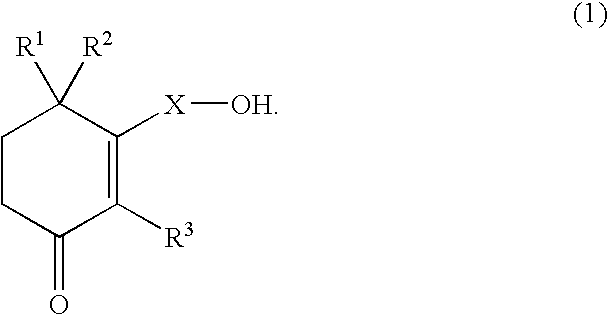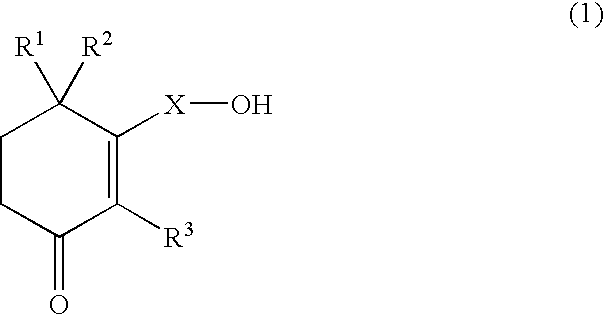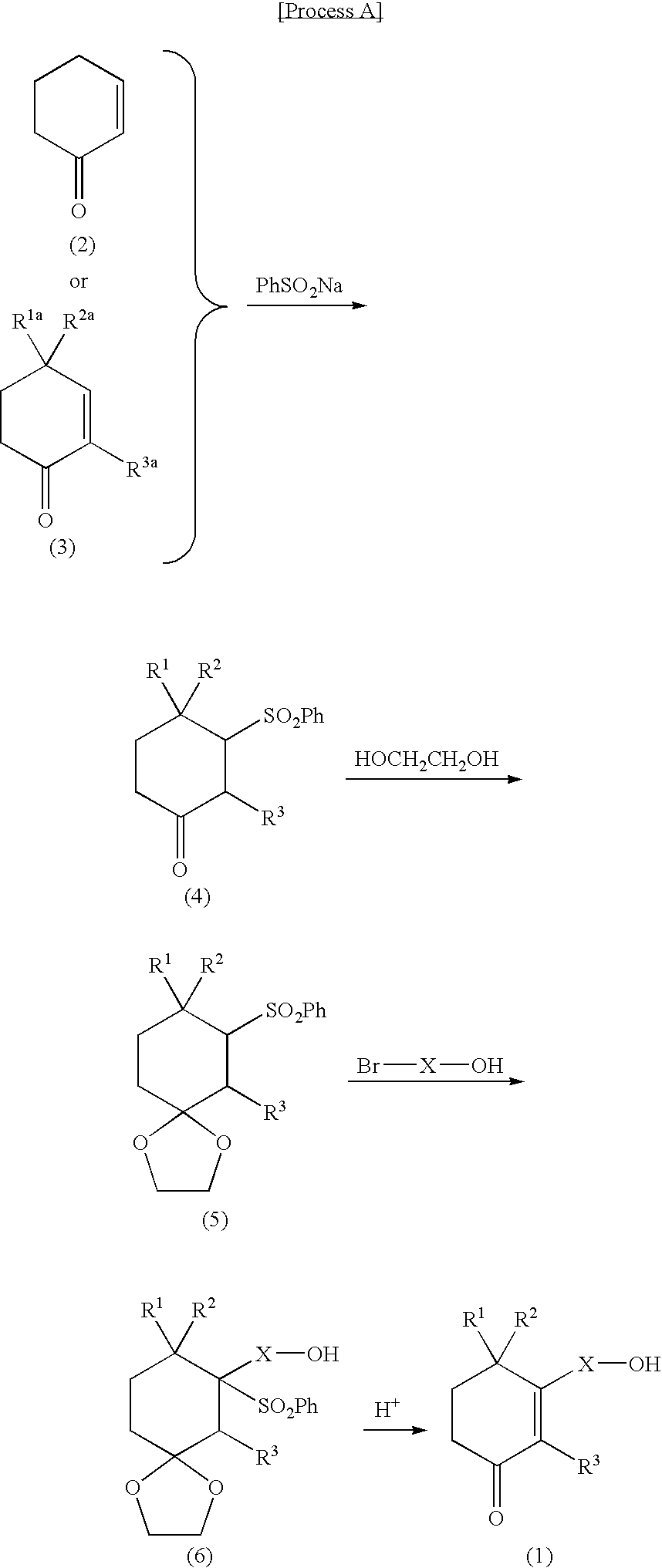Use of cyclohexenone derivatives for the manufacture of a medicament in the treatment of dysuria
a technology of cyclohexenone and derivatives, which is applied in the field of preventive and/or therapeutic agents for dysuria, can solve the problems that each of these remedies is not almighty and must be used properly
- Summary
- Abstract
- Description
- Claims
- Application Information
AI Technical Summary
Benefits of technology
Problems solved by technology
Method used
Image
Examples
preparation example 1
[0032](1) To a 20 ml THF solution of 7 ml of N,N-diisopropylamine, 35.4 ml of a 1.4M n-butyl lithium solution was added dropwise at −78° C., followed by stirring at 0° C. for 30 minutes. The resulting diisopropylamino lithium (LDA) solution was then added dropwise to a 10 ml THF solution of 4 ml of 4-methylcyclohexan-1-one at −78° C. After stirring at −78° C. for 1 hour, 6.5 ml of trimethylsilyl chloride was added dropwise. After stirring at room temperature for 1 hour, the reaction mixture was poured into an aqueous sodium bicarbonate solution. The resulting mixture was extracted with ether. The organic layer was washed with saturated saline, dried over magnesium sulfate and distilled under reduced pressure to remove the solvent. Distillation under reduced pressure yielded 5.83 g of 4-methyl-1-(trimethylsilyloxy)-1-cyclohexene (yield: 96%).
[0033]4-Methyl-1-(trimethylsilyloxy)-1-cyclohexene
[0034]Molecular weight: 184 (C10H20OSi) TLC: (hexane:ethyl acetate=8:2) Rf=0.8 1H-NMR (200 MHz...
preparation example 2
[0050]In a similar manner to Preparation Example 1, 3-(15-hydroxypentadecyl)-4-methyl-2-cyclohexen-1-one (Compound 2) was synthesized.
preparation example 3
[0051]To a methanol solution (8 ml) containing 132 mg (0.36 mmol, 1 equivalent) of 3-(12-acetoxypentadecyl)-2,4,4-trimethyl-2-cyclohexen-1-one were added 3 drops of water and 74 mg (0.54 mmol, 1.5 equivalents) of K2CO3. The resulting mixture was stirred at room temperature for 2.5 hours. After adjustment to pH 7 with 5% HCl, the reaction mixture was extracted with ether, dried over magnesium sulfate and distilled under reduced pressure to remove the solvent. The residue was purified by chromatography on a silica gel column, followed by elution with hexane-ethyl acetate (8:2 to 7:3), whereby 94 mg (yield: 81%) of 3-(12-hydroxydodecyl)-2,4,4-trimethyl-2-cyclohexen-1-one (Compound 3) was obtained in the form of a colorless oil.
[0052]3-(12-Hydroxydodecyl)-2,4,4-trimethyl-2-cyclohexen-1-one TLC: (hexane:ethyl acetate=7:3) Rf=0.2 GC: 40 to 280° C. (20° C. / min) 12 min, 99% 1H-NMR (200 MHz) δ: 1.13 (ds,6H,H-19,20), 1.26(s,br,16H,H-9 to H-16), 1.35-1.69(m,4H,H-8,17), 1.73(s,3H,H-21), 1.77(t,...
PUM
| Property | Measurement | Unit |
|---|---|---|
| temperature | aaaaa | aaaaa |
| pH | aaaaa | aaaaa |
| frequency | aaaaa | aaaaa |
Abstract
Description
Claims
Application Information
 Login to View More
Login to View More - R&D
- Intellectual Property
- Life Sciences
- Materials
- Tech Scout
- Unparalleled Data Quality
- Higher Quality Content
- 60% Fewer Hallucinations
Browse by: Latest US Patents, China's latest patents, Technical Efficacy Thesaurus, Application Domain, Technology Topic, Popular Technical Reports.
© 2025 PatSnap. All rights reserved.Legal|Privacy policy|Modern Slavery Act Transparency Statement|Sitemap|About US| Contact US: help@patsnap.com



